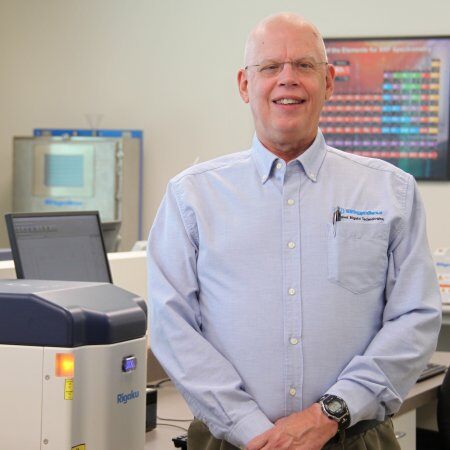Frequently Asked Questions About EDXRF
FAQ
-
EDXRF (energy dispersive X-ray fluorescence) is a non-destructive analytical technique that provides quick qualitative and quantitative elemental analysis of a wide range of matrices, from low ppm to high weight percent concentrations. To learn more about EDXRF and how it works, read What Is EDXRF Spectroscopy?
-
EDXRF can measure many materials. From solids and metal alloys to powders, polymers, filters, thin films, liquids, and oils.
-
Yes, indeed. EDXRF is a common piece of equipment used in industrial and manufacturing quality labs, as well as at-line on the plant or factory floor for quick, real-time information.
-
The cost of an EDXRF analyzer depends. Prices vary depending on the functionality and performance required. It really depends on the nature of your samples, your application, and your analytical goals. We offer a comprehensive range of EDXRF analyzers, from entry-level for simple applications to high-end systems for complex analyses and research. Please feel free to contact us, and we would be happy to help you find the right solution for your specific needs. You can also read our article, How much does an XRF spectrometer cost? for additional insights.
-
Compared to other techniques, like ICP and AAS, EDXRF provides easier sample preparation, simpler operation, lower running costs, lower cost per sample, and faster measurement times.
-
The detection limit depends on many factors, including the density of the sample, sample preparation, and the overall elemental composition of the sample being tested. For more information, contact us and we would be happy to help you find the best solution for your analytical needs.
-
X-ray fluorescence (XRF) is a comparative method. The X-ray signal does not directly tell you concentration. You must first “teach” (calibrate) the analyzer how X-rays go in and out of your material. This is done by measuring samples of your material with known concentrations. Then, when measuring an unknown sample, the X-ray signal is compared to the calibration to give final concentration results.
-
It depends on your samples and analytical performance needed. For most samples, it is as easy as simply filling a sample cup with a few grams of your material. But in general, all samples must be homogeneous, stable, and have a flat surface that covers the aperture.
-
Typically, you calibrate once a year and there is little or no routine maintenance with EDXRF.
-
Yes, absolutely. We provide a radiation safety section in our user manuals, and we provide a radiation safety survey when we build and ship each analyzer. The X-rays are contained within the optics and are fully shielded. All Rigaku EDXRF systems are interlocked, so there is no chance of stray X-rays escaping the analyzer. The radiation output under normal operation is less than normal background radiation. For example, flying on jet airplanes or even fluorescent lights.
-
Rigaku NEX Series EDXRF spectrometers are designed and manufactured by Applied Rigaku Technologies at our facility in Cedar Park, Texas, United States, near Austin. The site includes a dedicated applications laboratory and modern production space to support instrument development, manufacturing, and customer support.
-
Applied Rigaku Technologies is located at 1405 Arrow Point Drive, Suite 1301, Cedar Park, TX 78613, USA. For directions and additional contact details, please visit our Contact page.

Contact Us
Whether you're interested in getting a quote, want a demo, need technical support, or simply have a question, we're here to help.
